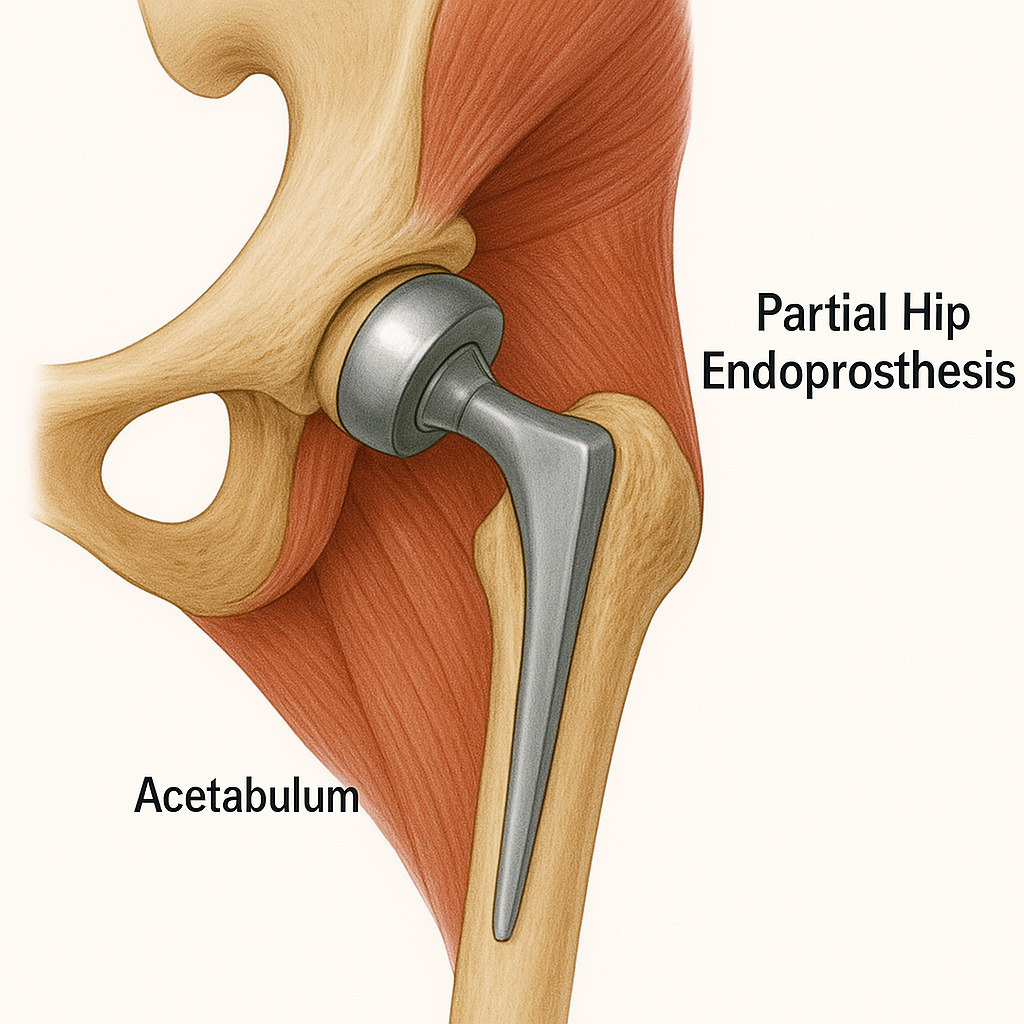Partial hip endoprosthesis - PEP
About
Partial hip endoprosthesis, also known as partial hip replacement or hemiarthroplasty, is a surgical procedure used to replace the femoral head (the "ball" of the hip joint) with a prosthetic component while preserving the natural acetabulum (the "socket" of the hip joint). This procedure is typically performed in cases where only the femoral head is damaged or diseased, while the acetabulum remains healthy.

Candidate
Candidates for partial hip endoprosthesis are typically older adults who have sustained a hip fracture, particularly fractures of the femoral neck or head. Additionally, individuals with certain types of hip arthritis or avascular necrosis of the femoral head may also be candidates for this procedure if the damage is limited to the femoral head and the acetabulum is relatively healthy.
Preparation
Preparing for partial hip endoprosthesis involves undergoing pre-operative evaluations, which may include physical examinations, imaging tests (such as X-rays or MRI scans), and blood tests to assess overall health and the extent of hip damage. Patients may be advised to discontinue certain medications, such as blood thinners, in the days leading up to surgery.
Treatment
During partial hip endoprosthesis surgery, the damaged femoral head is removed and replaced with a prosthetic component known as a femoral stem, which is anchored into the femur. The prosthetic femoral head, typically made of metal or ceramic, is then attached to the femoral stem, providing a new surface for the hip joint to move smoothly. The acetabulum is left intact, allowing it to articulate with the prosthetic femoral head.
Result
During partial hip endoprosthesis surgery, the damaged femoral head is removed and replaced with a prosthetic component known as a femoral stem, which is anchored into the femur. The prosthetic femoral head, typically made of metal or ceramic, is then attached to the femoral stem, providing a new surface for the hip joint to move smoothly. The acetabulum is left intact, allowing it to articulate with the prosthetic femoral head. However, the long-term success of the procedure may vary depending on factors such as the patient's overall health, the extent of hip damage, and adherence to post-operative rehabilitation protocols.
Precautions
Patients undergoing partial hip endoprosthesis surgery should follow their surgeon's instructions carefully both before and after the procedure. After surgery, precautions may include restrictions on weight-bearing activities, physical therapy to strengthen the hip muscles and improve mobility, and regular follow-up appointments with the surgeon to monitor progress and address any concerns. Patients should also be aware of potential complications associated with hip surgery, such as infection, blood clots, dislocation of the prosthetic hip joint, or loosening of the prosthetic components, and promptly report any unusual symptoms to their healthcare provider.
ZagrebMed patient reviews

Send an inquiry for the treatment
Start your way towards a successful treatment today. Fill out the form with your data, choose the service you need and we will connect you with the top medical experts in Zagreb.